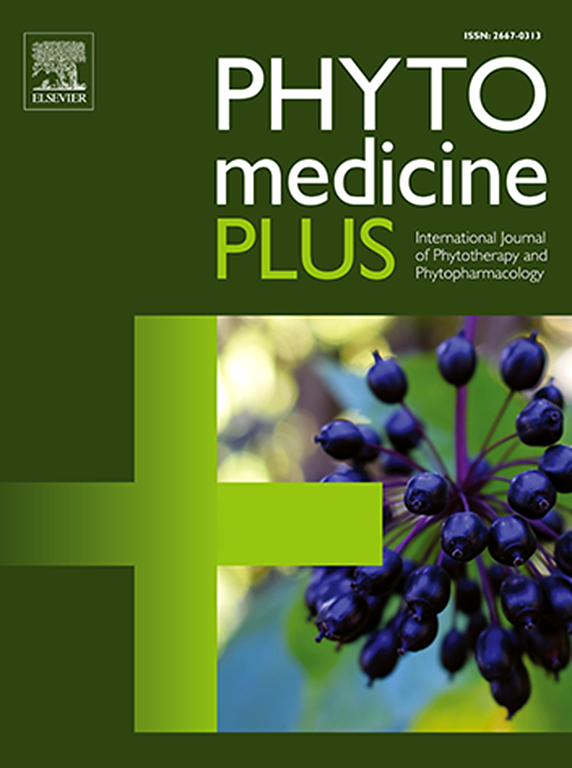Ethnopharmacological survey of Rwandese medicinal plants used for respiratory infections. Effect of Senecio maranguensis extract against respiratory syncytial virus
Q3 Pharmacology, Toxicology and Pharmaceutics
引用次数: 0
Abstract
Background
The knowledge of traditional health practitioners (THPs) on the use of medicinal plant remedies for treatment of human respiratory ailments provides a potential resource for identification of relevant plants and isolation of active ingredients.
Purpose
We aimed to identify medicinal plants used by THPs for treatment of respiratory ailments, then screen them in cultured cells for activity against respiratory syncytial virus (RSV), and assess the antiviral potential of identified screening hits.
Methods
Forty Rwandese THPs were interviewed to identify medicinal plants used for treatment of respiratory ailments. The indicated plant samples were collected and successively extracted using n-hexane, ethyl acetate, methanol, and water. Extracts were screened for anti-RSV activity and for cytotoxicity in HEp-2 cells.
Results
Based on ethnopharmacological survey of THPs, 48 plants used for treating respiratory ailments were identified. Of 203 plant extracts prepared for screening, ten methanolic and four aqueous extracts exhibited anti-RSV activity, manifested by EC50 values ranging from 1.6 to 39.5 µg/ml and selectivity indices (SI, CC50/EC50) of 12–294. Extended studies of an anti-RSV potential of methanolic extract of Senecio maranguensis O. Hoffm. leaves revealed that this preparation targeted the virus fusion (F) protein because extract resistant virus variants carried the double nucleotide substitution at c1104t and a1105g resulting in the T335M amino acid change in the F protein trimer internal cavity.
Conclusion
We found that eleven plants, traditionally used against respiratory ailments, exhibited substantial anti-RSV activity in cultured cells, exemplified by the S. maranguensis methanolic extract that affected the activity of RSV F protein.

卢旺达用于呼吸道感染的药用植物的民族药理学调查。马anguensis提取物对呼吸道合胞病毒的抑制作用
传统保健医生(THPs)在使用药用植物疗法治疗人类呼吸系统疾病方面的知识为鉴定相关植物和分离有效成分提供了潜在资源。目的筛选THPs治疗呼吸道疾病的药用植物,在体外培养细胞中筛选其抗呼吸道合胞病毒(RSV)的活性,并评价筛选命中的抗病毒潜力。方法对40名卢旺达thp进行访谈,鉴定用于治疗呼吸系统疾病的药用植物。收集指定的植物样品,依次用正己烷、乙酸乙酯、甲醇和水进行提取。筛选提取物的抗rsv活性和HEp-2细胞毒性。结果通过对THPs的民族药理学调查,鉴定出48种用于治疗呼吸系统疾病的植物。203个植物提取物中,10个甲醇提取物和4个水相提取物具有抗rsv活性,EC50值为1.6 ~ 39.5µg/ml,选择性指数(SI、CC50/EC50)为12 ~ 294。马anguensis O. Hoffm的甲醇提取物抗rsv潜能的扩展研究。叶片显示,该制备物靶向病毒融合(F)蛋白,因为提取物抗性病毒变体在c1104t和a1105g处携带双核苷酸替换,导致F蛋白三聚体内腔中T335M氨基酸发生变化。结论11种用于治疗呼吸系统疾病的植物在培养细胞中表现出明显的抗RSV活性,其中马兰根草(S. maranguensis)甲醇提取物可影响RSV F蛋白的活性。
本文章由计算机程序翻译,如有差异,请以英文原文为准。
求助全文
约1分钟内获得全文
求助全文
来源期刊

Phytomedicine Plus
Medicine-Complementary and Alternative Medicine
CiteScore
3.70
自引率
0.00%
发文量
178
审稿时长
81 days
期刊介绍:
 求助内容:
求助内容: 应助结果提醒方式:
应助结果提醒方式:


